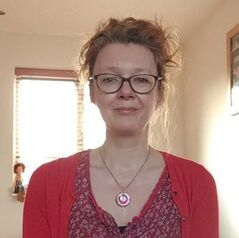
I am a play and creative play therapist, registered clay therapist and guided drawing practitioner.
I see clay as integral to my practice, as it supports both adults and children through their therapeutic phases of stabilisation, trauma exploration and cognitive integration.
My practice predominantly supports children and parents who experience both one off and complex trauma. Hence, my therapeutic approach acknowledges the need for both physical movement and cognitive integration within a client’s process, which clay affords.
The physical interaction clay offers plays such an important role in a client’s sensory integration or reconnection with their physical ‘self’ following trauma, that can lead to numbing, detachment, and disassociation of a client’s hurt pieces that clay offers a space to reconnect with, to find a sense of renewed wholeness.
I also find the use of clay within a group therapy setting particularly powerful and undertake both children and adult groups.
Clay allows group members to connect, to find commonalities and support along with different roles that often update their self-belief systems.
Finally, I like to use clay with parents as it facilitates conversations that help families move forward together.
I offer children within the primary school community both 1-1 and group clay therapy, in addition, I use clay within parent and child sessions that explore and nurture the parent-child relationship.
I also support educational staff within group clay therapy.
I see clay as integral to my practice, as it supports both adults and children through their therapeutic phases of stabilisation, trauma exploration and cognitive integration.
My practice predominantly supports children and parents who experience both one off and complex trauma. Hence, my therapeutic approach acknowledges the need for both physical movement and cognitive integration within a client’s process, which clay affords.
The physical interaction clay offers plays such an important role in a client’s sensory integration or reconnection with their physical ‘self’ following trauma, that can lead to numbing, detachment, and disassociation of a client’s hurt pieces that clay offers a space to reconnect with, to find a sense of renewed wholeness.
I also find the use of clay within a group therapy setting particularly powerful and undertake both children and adult groups.
Clay allows group members to connect, to find commonalities and support along with different roles that often update their self-belief systems.
Finally, I like to use clay with parents as it facilitates conversations that help families move forward together.
I offer children within the primary school community both 1-1 and group clay therapy, in addition, I use clay within parent and child sessions that explore and nurture the parent-child relationship.
I also support educational staff within group clay therapy.

